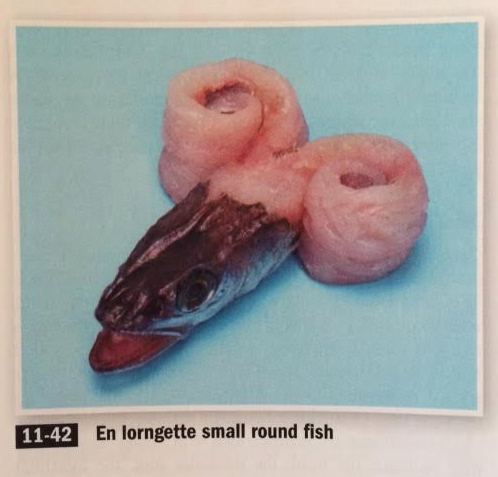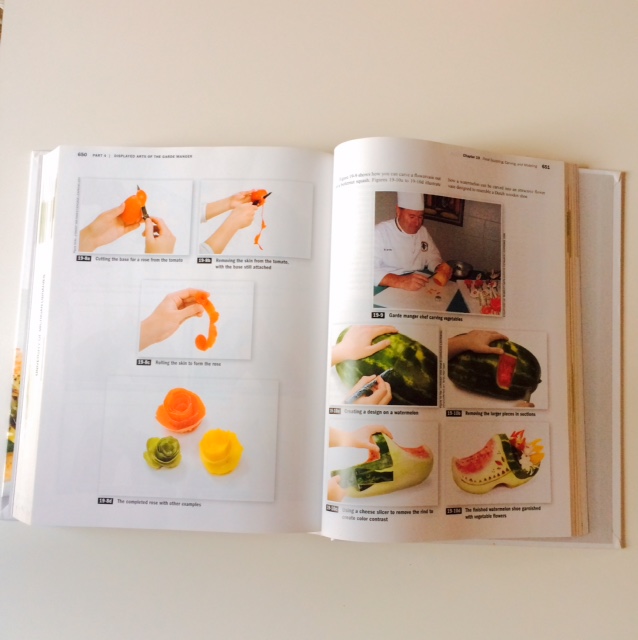I'm not sure how I discovered Robert Garlough and Angus Campbell's Modern Garde Manger in the U-M Library's collections. I suspect I was looking for Food for Fifty (a cookbook that helped me survive a long-ago summer spent cooking for campers) and got distracted.
Modern Garde Manger is large and impressive and must have stood out on the shelf. As I turned to a random page, whatever surprise I felt at the library's breadth of books on quantity cooking was quickly replaced by shock. This is what I saw:

Fish "en lorngette," from Modern Garde Manger
I thought to myself, why on earth would I prepare a fish this way? And, who has time to sit around imagining ways to make a raw fish look pretty? Many of the demonstrated cuts were decorative, not practical, involving a level of detail I rarely (or never) apply to my own home cooking (don't get me started on the bird self-trussed with its own beak on page 434, or the watermelon carved to look shoe and stuffed with flower-shaped vegetables on page 651). I found the book so startling and delightful, I checked it out. Multiple times.

"Figures 19-10a to 19-10d illustrate how a watermelon can be carved into an attractive flower vase designed to resemble a Dutch wooden shoe."
The University of Michigan doesn't have a culinary program, which begs the question, what is the value of a professional culinary textbook to a primarily non-professional audience? Here are a few reasons I encourage you to check out this book and explore similar titles in our catalog:
- You'll learn what's possible. Even if you're not planning to become a professional chef, this book will give you a great sense of the countless ways foods can be prepared and presented. The techniques will impress, inspire, and sometimes terrify.
- You'll see what separates the amateurs from the pros. Reading this book, you'll get a thorough introduction to the professional kitchen brigade system and an insider's look at equipment that's used in commercial kitchens.
- You'll find details that are missing elsewhere. Frustrated that your trendy chef cookbook assumes you already know how to de-beak an octopus? This text will show you step-by-step how to perform tasks other books may assume you already know.
- You'll pick up some neat tricks. Even though some of this book's preparations are best left to the pros, there are plenty of tips that anyone can master (e.g., arranging a cheese tasting, making scallion and radish flowers).